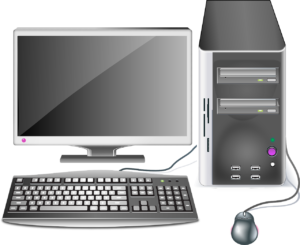Enhancing Corporate Data Security with Access Control
Access control plays a vital role in data security, allowing organizations to manage who has authorized access to their corporate data and resources. Secure access control employs policies that verify users’ identities and grant proper access levels to corporate resources.
Its implementation is critical to web application security, ensuring only authorized users have access to specific resources. By doing so, access control helps organizations avoid data breaches and prevent various attack vectors, including buffer overflow attacks, KRACK attacks, on-path attacks, and phishing attacks.
Related: 6 Best Ways to Improve a Building’s Access Control System
What Are the Various Types of Access Controls?
Organizations can implement different types of access controls to protect their data and users. These include:
Attribute-based Access Control (ABAC)
ABAC is a context-based policy that defines access based on guidelines. The robust system is used in identity and access management (IAM) frameworks.
Discretionary Access Control (DAC)
DAC models enable the data owner to control access by assigning access rights to user-specified rules. Once a user gains access to the system, they can grant access to other users at their discretion.
Mandatory Access Control (MAC)
An organization’s administrator manages strict policies on individual user access to data, resources, and systems. Users are not permitted to make changes to permissions.
Role-Based Access Control (RBAC)
RBAC enables the creation of permissions by grouping users, defining user roles, and specifying actions. Users are restricted to performing only those actions authorized for their role and cannot modify their assigned access level.
Break-Glass Access Control
Break-glass access control is a method that allows the creation of an emergency account that overrides standard permissions. If a critical emergency arises, users can quickly access a system or account they wouldn’t typically be authorized to use.
Rule-based Access Control
In a rule-based approach, a system admin sets up regulations controlling entry to business resources. These regulations mainly rely on circumstances such as the user’s location and resource access time.
Related: Luxul XWS-1810 High Power AC1200 Wireless Controller System Review
If you’re unsure about which camera system would be the most suitable for your business, please get in touch with the experts here at C&C Technology Group for a consultation.
Access Control Management
Access control is managed through several components:
Authentication
The process of proving one’s identity is called authentication. For instance, when users log into their online banking or email account using a username and password, they successfully authenticate.
Authorization
Authorization is a security measure added to the authentication process to determine whether a user should be allowed to access data or perform a specific transaction. It establishes access rights and privileges to resources. For example, an email service provider may ask for two-factor authentication (2FA).
Access
After a user finishes the authentication and authorization steps, their identification will be confirmed. As a result, they will gain entry to the resource they are trying to access.
Manage
Managing access control systems involves adding or removing authentication and authorization for users and systems. This task can be challenging in contemporary IT environments comprising cloud services and on-premises systems.
Audit
Through the access control audit process, organizations can implement the principle of least privilege. It involves collecting data on user activity, which can be analyzed to detect possible access violations.
How Does Access Control Work?
Access control is a process that verifies the identity of users attempting to access digital or physical resources. It is essential in securing sensitive data and physical assets.
Physical Access Control
In physical access control, mechanisms control access to physical devices or buildings. Examples of physical access control systems include:
Barroom Bouncers
They verify IDs at the bar entrance, ensuring only legal-age individuals are allowed.
Subway Turnstiles
Subway turnstiles access control to ensure that only verified people with enough credit can use the subway system.
Keycard or Badge Scanners
Employees must scan their keycards or badges to access the office building.
Logical/Information Access Control
Logical access control is used to identify, authenticate, and authorize users in computer systems. Some example scenarios of information access control include:
- Entering a password to sign into a laptop: users can use passwords to secure their devices and prevent unauthorized access to their data.
- Using a thumbprint to unlock a smartphone with a thumbprint scan.
- Remotely accessing an employer’s internal network through a VPN: virtual private networks (VPNs) are used to connect to corporate networks from remote locations securely.
Access control is essential to ensuring resource confidentiality, integrity, and availability. By verifying user identities and authorizing access, organizations can secure their assets against potential threats.
Methods for Implementing Access Control

Access control is a critical component of data security, but what are some methods companies use to implement it? One of the most common methods is using Virtual Private Networks (VPNs) to provide secure, remote access to resources. It is especially important for businesses with employees working from various locations worldwide.
Understanding Authentication and Authorization Compliance Requirements in Access Control
Together, authentication and authorization enable businesses to manage who has access to their data and resources. By implementing effective access control measures, they can protect their most valuable assets from potential threats and ensure their data’s confidentiality, integrity, and availability.
Access control is vital in ensuring that organizations adhere to data privacy regulations. This includes various compliance requirements.
PCI DSS
The PCI DSS safeguards the payment card ecosystem. An access control system is essential to allow or refuse transactions and validate user identity.
HIPAA
HIPAA was established to safeguard patient health information and prevent it from being disclosed without their permission. Maintaining access control is crucial to restrict data access to authorized individuals and prevent unauthorized access or data breaches.
SOC 2
SOC 2 is an audit protocol for cloud service providers storing customer data. It guarantees that providers safeguard their customers’ privacy and mandates that organizations enforce strict policies and procedures regarding customer data.
ISO 27001
The ISO sets security standards that organizations of all industries should comply with and show their customers that they prioritize security. ISO 27001 is the highest level of information security and compliance certification by the ISO.
Related: What Is a Transceiver? Guide and Examples
Are you looking to streamline your access control methods? Check out how our approach to technology will take your business to the next level.
How Can C&C Technology Help?

At C&C Technology Group, we can help you implement effective access control measures to secure your data and resources. Our expert team of security professionals can help you identify potential security threats, create a secure access control system, and monitor user access.
We can also help you select the right security software and hardware, implement compliance standards, and ensure that your data is protected. With our comprehensive access control solutions, you can rest assured that your data and resources are secure.
Last Updated on May 12, 2023 by Josh Mahan




